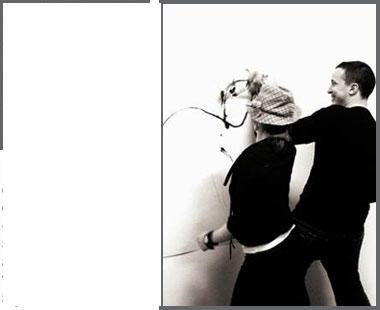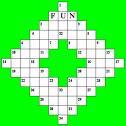Teaching the Whole Student
The theory behind “whole student” teaching deserves its own section, so if you want theory, use this link: Whole Student TheoryIf you just want practical, easy-to-achieve suggestions,
look at the following.
I have divided up the techniques for teaching the “whole
student” into three sections:
- The first section is for the first unit of the quarter, so there are ideas which introduce students to the campus and which build community.
- The second section accompanies an “analyze and evaluate” essay.
- The third section is meant to accompany either a persuasive essay or an essay about literature.
Introductory Unit
Whole Student Techniques to Accompany an Analysis-Evaluation Unit
Persuasive Unit or Literature Unit

Introductory Unit
 "Whole Student" Techniques to Accompany an introductory unit. Teaching English 100,
I open with the book, Pedro
and Me, so many of these techniques relate to that book, which is about the third year of
Real World, which took place in San Francisco.
"Whole Student" Techniques to Accompany an introductory unit. Teaching English 100,
I open with the book, Pedro
and Me, so many of these techniques relate to that book, which is about the third year of
Real World, which took place in San Francisco.- Colored paper for assignment sheet, three-hole punched, possibly including a graphic. Possibly give an alternative assignment in which students can do a graphic-essay using their own illustrations. Using different colors for each assignment helps students to find the assignment sheet and to keep themselves organized.
- Scavenger Hunt: This is not actually connected to the paper. I just like to do it early in the quarter.
- Individual meetings with students: Again, this is not connected to the paper, but it is important to have early in the quarter. Allow about 10 minutes to discuss their first writing, your grading practices, and to go into their personal goals and learning styles. I believe that it is great if you can hold this meeting in another place besides the classroom, preferably your office.
- Quiz in a group of four.
- Graphic organizer comparing one’s own life to Judd’s, Pam’s, or Pedro’s.
- Provocative
question exercise in a group of 3, 4, or 5.
- Color overheads to show other facets of the people in the book. Use special overhead transparencies.
- Film clips from Real World to show some of the San Francisco Real World scenes.
- A vacation: The Real World folks all go on a vacation, so take the students outside for something, preferably something that does not involve the whole class hearing everybody. Possibilities: freewriting, preparing for provocative question exercise, exercise on analyzing the effectiveness of the author’s graphics.
- Building exercises: Sit in a circle with nobody blocking the view of anybody else. Be close. Everybody should come prepared for this (TELL them the previous class and have it written down on the homework, too.). Go around the circle, in order, one by one. Each person responds to a comment made by a previous student, showing careful listening. Then she/ he reads a line that stood out for her/ him and follows up by explaining why that line was meaningful. Students are encouraged to explain the stories from their own lives that connect to that line. No comments. No criticism. A hug if needed.
- Sample paper on overhead. Read (better if students do it) and discuss what was done well.
Whole Student Techniques to Accompany an Analysis-Evaluation Unit
Use some of the techniques explained for the Pedro and Me section of the class, such as vacations, building, sample papers, and so on.
- In
groups of two, three, or four, practice quoting from texts using overhead
pens and transparencies. Make
sure that the student’s (students’) own words are used as well as quoted
words (see example). Check
on each effort before it is put on the overhead. If possible, use multiple colors,
possibly using a different color for the parenthetical documentation and
the Works Cited.
** If you have enough board space, this can be done on the boards, using colored pens or chalk. If you can do this, include a contest to get every single one perfect. Make students responsible for helping each other until all the quotes are perfect. - You can use one of these techniques for paraphrasing – either on overheads or on the board.
- Practice paraphrasing using a film clip or song lyrics relevant to the articles discussed.
- Trampoline analogy. Possibly bring in a mini-trampoline. The trampoline is the article analyzed and the gymnast is the student – idea is to focus on the primacy of the student’s ideas over those of the text analyzed.
- Standing on chairs and desks. Same issue – we stand on the shoulders/ chairs of others. You can do a Dead Poets’ Society thing and have them stand on the teacher’s desk if you like.
- Apples, oranges, and lemons demo. Juggle apples, oranges, and lemons (or have a student do it) to show use of two texts and one’s own opinion (lemon). Then show “real analysis” by cutting up the apples and oranges to show a neat strategy for side-by-side comparison of sub-points. Squeeze lemon over the top to show your opinion.
Persuasive Unit or Literature Unit
 Students write questionnaires/ surveys and give them
to the class. I pass out a short
instruction sheet on types of questions and as we go through the types, students
write their own during class, according to the topic each has chosen. Students bring
10 copies of their
questionnaire to class and pass them around in a large circle. After finishing, we
pass them back, going the
reverse direction. How to Design Effective Questionnaires
Students write questionnaires/ surveys and give them
to the class. I pass out a short
instruction sheet on types of questions and as we go through the types, students
write their own during class, according to the topic each has chosen. Students bring
10 copies of their
questionnaire to class and pass them around in a large circle. After finishing, we
pass them back, going the
reverse direction. How to Design Effective Questionnaires- Students interview each other in pairs, threes, or fours about the topics on which they are writing. This engenders some of the most meaningful, searching exploration of the topics and their implications. I like to have it directly follow the questionnaire time.
- Use film clips with music and emotional impact, such as the montage of violence perpetrated by the U.S. government in Bowling for Columbine, with ironic musical background.
- Crossword puzzles that incorporate the vocabulary necessary to understand the reading. I make these up myself – it’s fun. Use this link to help you: http://www.crosswordpuzzlegames.com/create.html
- Have a stand-up and move-around “mixer” in which
everybody gets the name of a character on his/ her back and must use questions
that can only get “yes” or “no” answers to figure out who they are. Have plenty so
people who solve theirs can do
another one. An alternative
version of this is to “jigsaw”: Every
person reads one of four to eight articles or parts of articles and then moves
around finding people who have read the other parts. They listen to the person tell
them about the
other article/ section and then write down a paraphrase of each until they have
completely understood all articles/ sections.
- Bring in props or food connected to the literature such as Vietnamese or Chinese paper clothing, cars, etc. for “No-Name Woman,” Masks and Renaissance hats for “Cask of Amontillado,” udon for Kitchen, or purse and paper money for “Los Vendidos.”
- Play
Jeopardy using
play money, answers, and money amounts covering the answers to review
either grammar or facts about a book. This can be done on the computer
ahead of time if you have a smart classroom.
- Go over grammar issues, either with your grammar book or using rules based on previous student papers – having the students teach with large posters. Students make the posters with butcher paper and scented pens, giving the rules and then showing an error and the same sentence done correctly. They then present these grammar rules to the class in a very short teaching demo. I keep the posters and put them up around the room when the students are taking their grammar final.

